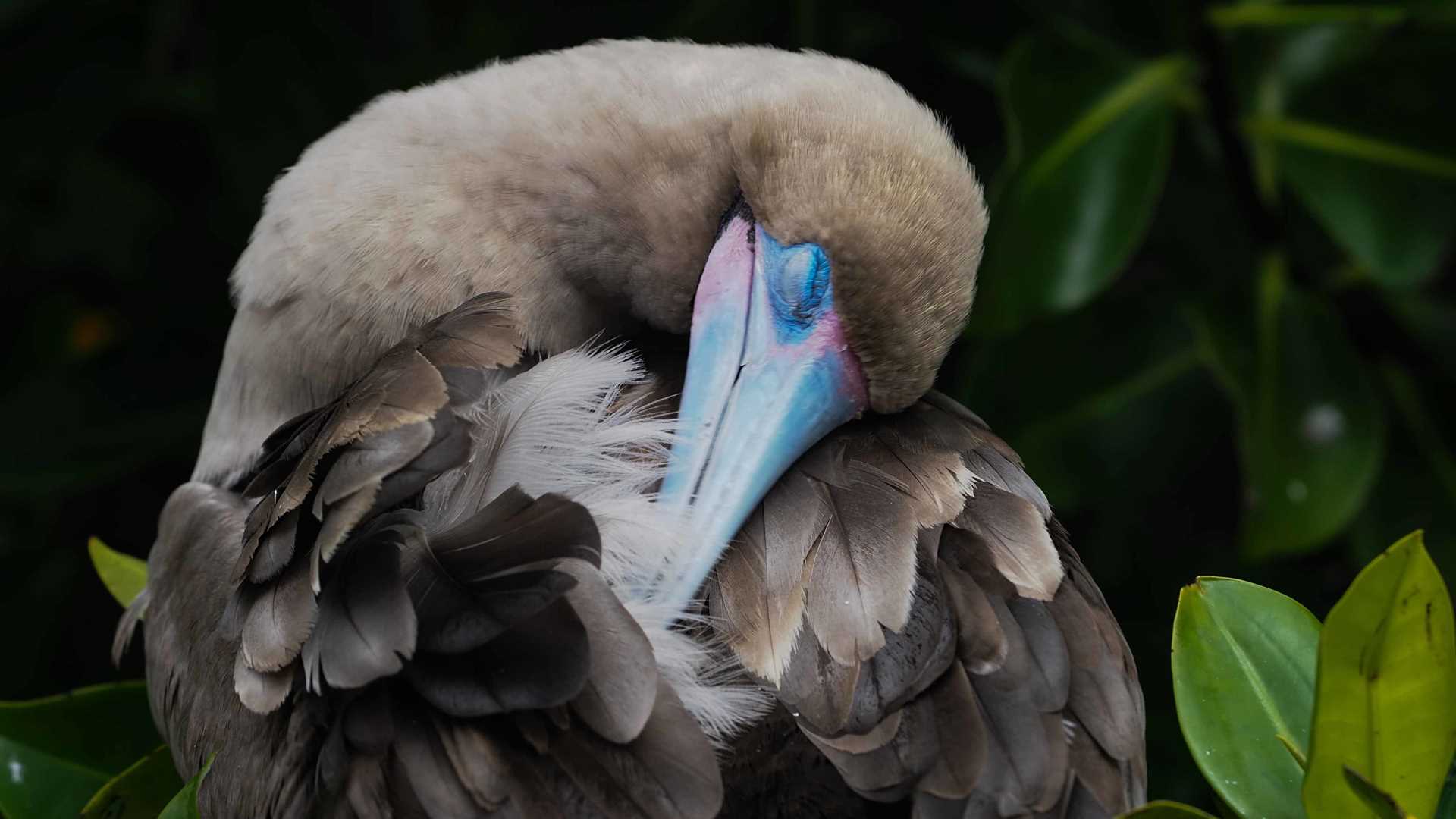We arrived to Genovesa, one of the farthest northern islands in the archipelago, and as soon as we anchored, we experienced the incredible feeling of a very isolated place!
Our early outing today was Darwin Bay, which is an exceptional seabird colony of made up of many different species, such as swallow-tailed gulls, red-footed boobies and Nazca boobies, which are sharing this bay for reproduction and nesting purposes. We disembarked on a white coral beach, where we were welcomed by resting sea lions and swallow-tailed gulls that were interacting with each other. Inside the trail, we were very close to red-footed boobies’ nests, with many fluffy cute chicks resting and waiting for their parents to return to feed them.
Opuntia helleri is one of the representatives of the prickly pear Galapagos cacti on this distant island, with the exclusive characteristic of having hairy pads rather than spiky ones, which got the attention of our guests. This is due to the lack of land reptiles on this particular island.
The snorkeling this morning was the warmest of this week. This activity has been very popular on this expedition, and even though every day has been full of different species of fish, today we encountered trumpet fishes and Moorish idols that we added to our checklist.
During the kayaking and paddle boarding outings we spotted some Galapagos fur seals on the rocks, they were resting and seemed very comfortable. The Zodiacs got close to them and everyone took nice pictures.
We had a sunny walk around Prince Phillips Steps, surrounded by Nazca boobies nests, lots of Galapagos shear waters, and storm petrels flying above us. Near the end of the trail, we spotted the Galapagos short-eared owls, which was definitely the best way to end this magical trip.









